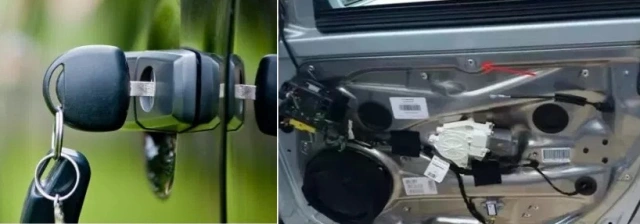Introduction
Your car door lock actuator is a crucial component that ensures the smooth operation of your vehicle’s locking mechanism. However, changing weather conditions can affect its performance. Proper seasonal maintenance of car door locks, especially the door lock actuator, is essential to prevent malfunctions and extend the lifespan of your vehicle's locking system. In this article, we’ll explore the best methods for maintaining your car door lock actuator and locks during different seasons.

Spring Maintenance Tips for Car Door Locks and Actuators
As temperatures rise and the snow melts, spring is a great time to assess the condition of your car door locks. Moisture buildup during winter may have impacted the performance of the door lock actuator, so a thorough inspection is vital.
- Check for Rust: After winter, it’s common to find rust forming on the door lock mechanism, especially around the actuator. Use a rust remover or lubricant to keep it clean and functional.
- Lubrication: Apply a silicone-based lubricant to the door lock actuator and surrounding components to ensure smooth operation. Avoid using oil-based products, as they can attract dirt and dust.
- Inspect Electrical Connections: Ensure the door lock actuator's wiring and connections are intact, as spring humidity can sometimes cause corrosion in electrical components.
Summer Maintenance Tips for Car Door Locks and Actuators
High summer temperatures and dry conditions can cause car door locks to stiffen, making it harder to operate the door lock actuator.
- Avoid Overheating: Excessive heat can cause the door lock actuator’s plastic components to wear out or deform. Parking in shaded areas or using sunshades can prevent direct sunlight from affecting the locking system.
- Regular Lubrication: Heat can dry out lubricants quickly, leading to friction in the door lock actuator. It’s essential to apply a fresh layer of silicone-based lubricant every few weeks.
- Check for Wear and Tear: The summer heat can cause the actuator’s rubber seals to deteriorate faster, leading to moisture ingress in the rainy season. Inspect and replace worn seals promptly.
Fall Maintenance Tips for Car Door Locks and Actuators
Fall brings cooler weather and increased rainfall, making it necessary to prepare your car door locks and actuators for the coming winter.
- Clean Away Debris: Leaves, dirt, and debris can get stuck in the locking mechanism and damage the door lock actuator over time. Regular cleaning is essential to avoid such issues.
- Test Actuator Response: Fall is the perfect time to test the actuator’s performance. Ensure that the door lock actuator is responsive and doesn’t struggle to lock or unlock the doors.
- Prevent Moisture Build-Up: Moisture is a common problem during fall. A moisture-repellent spray on the car door locks and actuators will help avoid any water damage that can freeze in winter.
Winter Maintenance Tips for Car Door Locks and Actuators
Cold winter temperatures are notorious for freezing car door locks and stiffening the door lock actuator. Proper winterization is crucial to avoid malfunctions in the harshest months.
- Prevent Freezing: Use a de-icing spray regularly to prevent the car door lock actuator from freezing. Applying a lubricant before the first frost can also prevent the locks from becoming stiff.
- Warm Up the Car: If your door lock actuator is frozen, gently warming up your car’s interior can help thaw it. However, avoid using boiling water as it can crack the actuator.
- Check Battery Levels: A weak car battery in cold temperatures can affect the actuator’s power supply. Ensure your car’s electrical system is functioning properly to avoid any actuator-related issues during winter.
General Year-Round Maintenance Tips
- Routine Inspections: No matter the season, regular inspection of your car door lock actuator is essential. Look out for unusual sounds, delayed responses, or stiffness when locking or unlocking your doors.
- Use the Right Products: Always use a silicone-based lubricant for door lock actuators as they are designed to withstand varying weather conditions without collecting dust.
- Replace Worn Parts: If the door lock actuator shows signs of wear, such as a slow or non-responsive locking mechanism, it’s better to replace the actuator before it fails completely.
Conclusion
Maintaining your car door locks and door lock actuators according to the season is key to ensuring their longevity and preventing inconvenient breakdowns. By following these simple maintenance tips, you can avoid common problems associated with seasonal changes and ensure that your car’s door lock actuator continues to function smoothly year-round.
